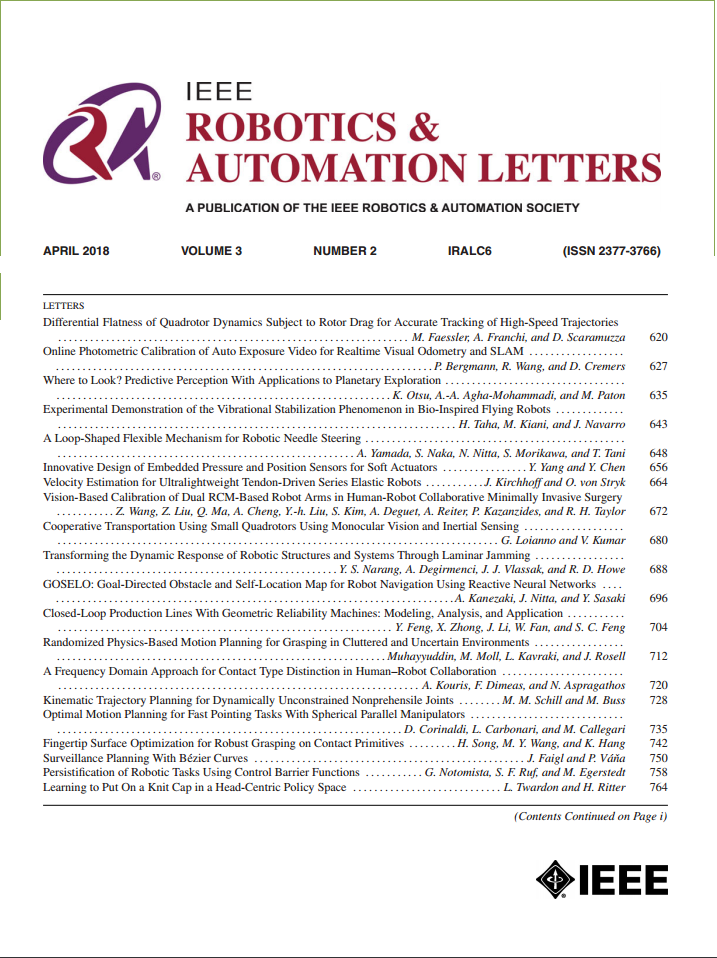CUBE360: Learning Cubic Field Representation for Monocular Panoramic Depth Estimation
IF 4.6
2区 计算机科学
Q2 ROBOTICS
引用次数: 0
Abstract
Panoramic depth estimation presents significant challenges due to the severe distortion caused by equirectangular projection (ERP) and the limited availability of panoramic RGB-D datasets. Inspired by the recentsuccess of neural rendering, we propose a self-supervised method, named学习立方场表示用于单目全景深度估计
由于等矩形投影(ERP)引起的严重失真和全景RGB-D数据集的有限可用性,全景深度估计面临着重大挑战。受最近神经渲染成功的启发,我们提出了一种自监督方法CUBE360,该方法从单个全景图像中学习由多个多平面图像(MPIs)组成的立方场,用于在任何视图方向上进行连续深度估计。我们的CUBE360采用立方体映射投影将ERP图像转换为六个面,并为每个面提取mpi,从而减少mpi处理高分辨率数据所需的内存消耗。然后使用基于注意力的混合模块来学习立方面mpi之间的相关性,构建具有不同深度层次颜色和密度信息的立方场表示。此外,引入了双重采样策略,在立方体和平面尺度上呈现立方体场的新视图。整个管道使用自监督学习(SSL)方法从渲染视图中计算的光度损失进行训练,从而实现无需深度注释的训练。在合成数据集和真实数据集上的实验表明,与以前的SSL方法相比,CUBE360具有优越的性能。
本文章由计算机程序翻译,如有差异,请以英文原文为准。
求助全文
约1分钟内获得全文
求助全文
来源期刊

IEEE Robotics and Automation Letters
Computer Science-Computer Science Applications
CiteScore
9.60
自引率
15.40%
发文量
1428
期刊介绍:
The scope of this journal is to publish peer-reviewed articles that provide a timely and concise account of innovative research ideas and application results, reporting significant theoretical findings and application case studies in areas of robotics and automation.
 求助内容:
求助内容: 应助结果提醒方式:
应助结果提醒方式:


